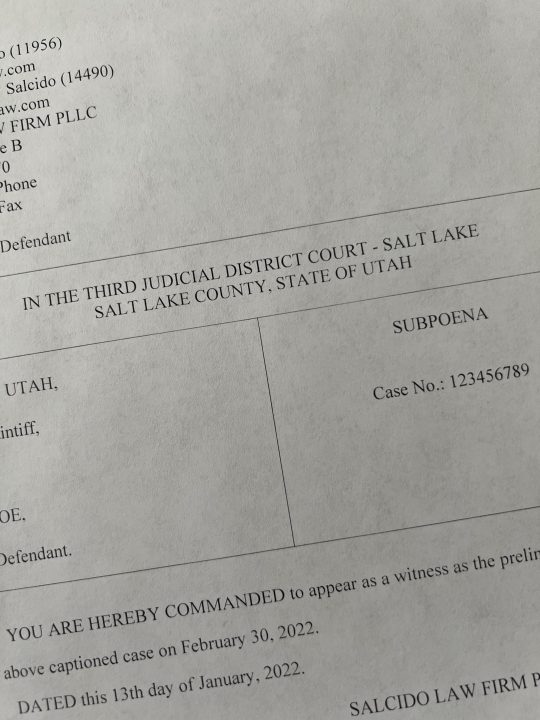Statutory Authority to Sever Criminal Counts
Utah Code § 77-8a-1(1) provides a procedure to sever criminal counts from others:
Two or more felonies, misdemeanors, or both, may be charged in the same indictment or information if each offense is a separate count and if the offenses charged are:
(a) Based on the same conduct or are otherwise connected together in their commission; or
(b) Alleged to have been part of a common scheme or plan.
Case Law Regarding Motions to Sever

“Thus, joinder of multiple offenses is appropriate if the requirements of Utah Code Utah Code § 77-8a-1 are met and neither the defendant nor prosecution is prejudiced as a result of the joinder.” State v. Balfour, 198 P.3d 471, 477 (Utah App. 2008). Additionally, care must be taken that Utah Code § 77-8a-1 is not misused to deprive an accused of a fair trial upon an offense by joining different offense sot that evidence concerning charges unrelated in time and nature could be admitted as to the multiple offenses in an effort to stigmatize the defendant and thus make it questionable that the jury would give a fair and dispassionate consideration to the evidence on the first charge. Id. at 480.
The Utah Supreme Court has “held that crimes are otherwise connected together in their commission where a later crime is precipitated by an earlier one, such as where the later crimes facilitates flight after the earlier one.” State v. Benson, 325 P.3d 855, 859 (Utah App. 2014). However, crimes don’t have to be causally related to be connected; “the category of connected cases includes, but is not limited to precipitation cases…” Id. at 860. Additionally, “as a general rule, charges are connected in their commission when there is a direct relationship between them…” State v. Hildreth, 238 P.3d 444, 453 (Utah App 2010). In the precipitation case of Benson, the defendant was charged with multiple counts of armed robbery in a 24 hour period. The court denied the defendant’s motion to sever because it found that the defendant’s use of the same vehicle and weapon at each robbery caused the crimes to be “connected together in their commission.”
In a different type of case, State v. Scales, 946 P.2d 377, 389 (Utah App. 1997), the court upheld a denial of a motion to sever because it found that the defendant’s stealing a car after killing his wife was sufficiently “connected together in their commission.” Id. This was not a precipitation-type case, but the court still found it was connected because of that direct relationship between the killing and the fleeing from the killing. Id. at 385.
In contrast to Scales and Benson, the Hildreth court found the trial court erred in denying the defendant’s motion to sever because the crimes were not connected together in their commission. Hildreth 238 P.3d at 452. In Hildreth, the defendant was charged with eight counts of forcible sexual abuse in a single information. Id. at 446. The allegations included several victims over a series of several years. Id. These crimes were not connected in their commission because “the charges were not directly related to one another. Moreover, none of the charges was precipitated by the commission of the others, nor were any of the charges committed in an attempt to conceal the other.” Id. at 452




